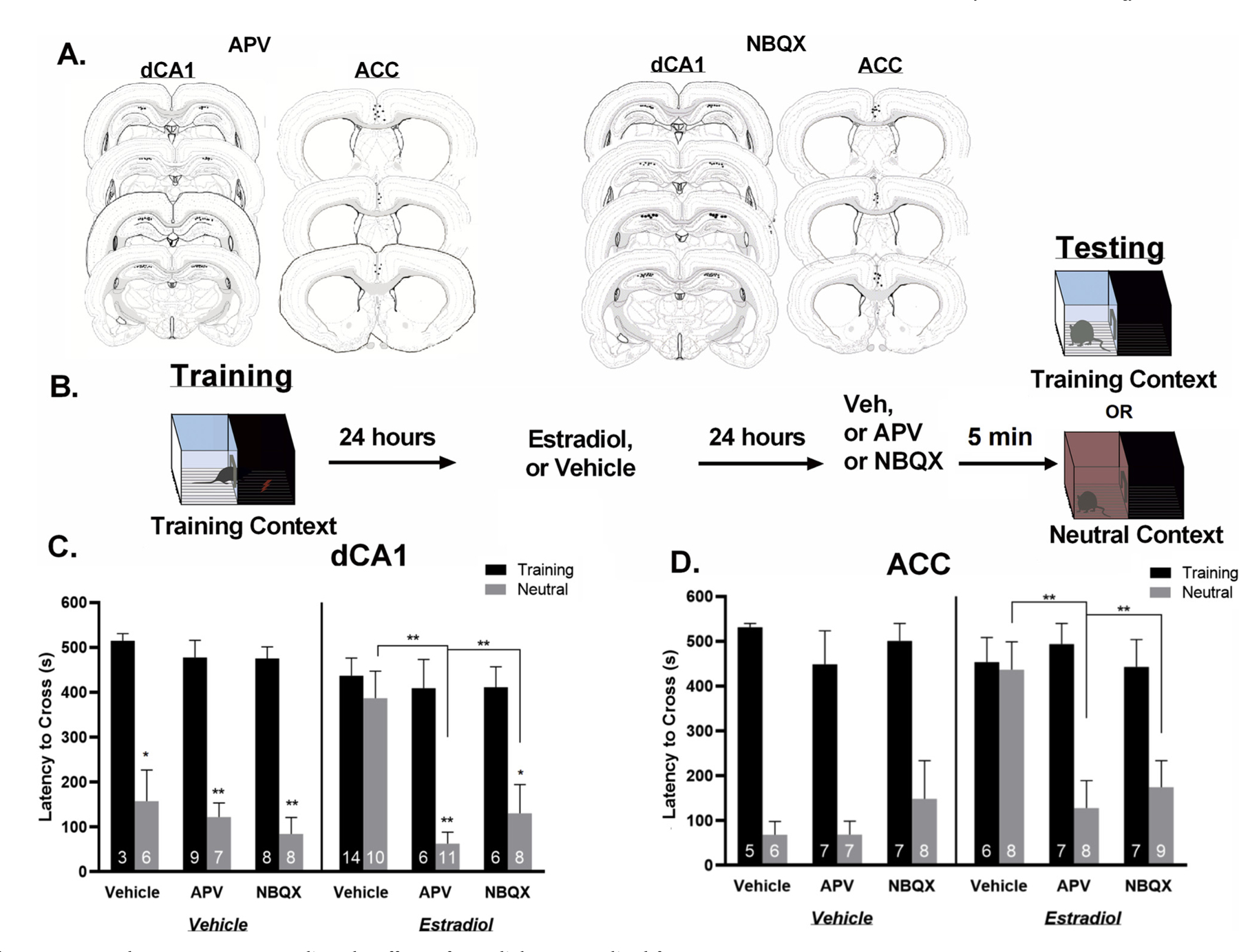Fig. 2.

AMPA and NMDA receptors mediate the effects of estradiol on generalized fear.
A. Local infusion site verification for the dCA1 and ACC. Black dots represent infusion sites for one or more animals. Drawings are adapted from Swanson, (2018). B. Schematic of the experimental procedure. All animals were trained in an inhibitory avoidance chamber. Twenty-four hours after training animals received peripheral injections of either estradiol or vehicle. Twenty-four hours after injections animals received local infusions of either APV, NBQX, or vehicle and were then tested for generalization in either the training or the neutral context. C. Blocking AMPA or NMDA receptors within the dCA1 eliminates estradiol-induced generalization. Estradiol alone induced context generalization, but when either the NMDA antagonist (APV) or the AMPA antagonist (NBQX) were infused into the dCA1, estradiol-induced generalization was significantly attenuated. D. Estradiol treatment induced context generalization. Blocking either NMDA receptors with APV or AMPA receptors with NBQX in the ACC eliminated estradiol-induced generalization. Data are expressed as mean ± SEM *p < 0.05 **p < 0.01.
